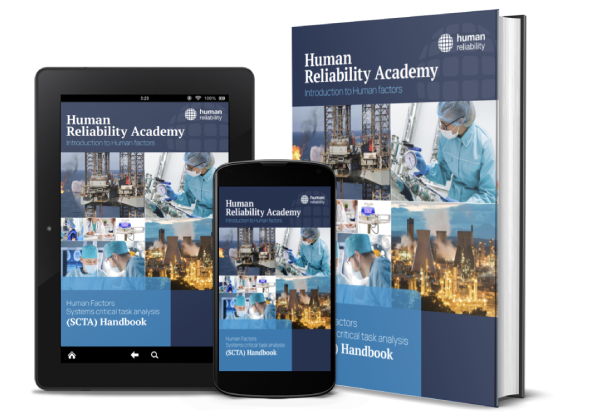This article first appeared in Petroleum Review, August 2020, published by the Energy Institute (www.energyinst.org).
People are an essential part of any safety critical industry. Safety depends on the performance of operational tasks, as well as maintenance, inspection and testing of automated systems. But what happens when things inevitably deviate from standard practice? If it is a small deviation it is likely that nothing will happen, operators will recover, safety will be maintained and the organisation might never be aware of it. However, if it is a larger deviation, or a series of smaller deviations that interact in unfortunate ways, disaster could strike.
History is littered with major industrial accidents that have had substantial costs to the environment and human life. The 1986 nuclear plant disaster at Chernobyl readily springs to mind, where an exposed reactor fire spewed radioactive contamination across the USSR and Western Europe for nine days.
Telling a story
The ‘first story’ can dominate incidents and accidents: Who is to blame? But the ‘second story’ is much more important for learning: How did this happen? Rather than a list of names and what they did wrong at the sharp-end to cause the accident, we want to understand why people acted the way they did, how vulnerabilities in the system interacted, what conditions were in place at the blunt-end that contributed to how these events unfolded. Also, rather than look back at accidents, we want to look forward and anticipate what could go wrong and how vulnerabilities could play out so risks can be managed and minimised before something serious goes wrong.
Part of Chernobyl’s story was a failure of a final safety system that should have brought the system back to a safe state. More recently, the Buncefield explosion in 2006 also involved a safety system – a high-level trip to prevent the overflow of a petrol storage tank, that did not work when required. For human performance we need to ensure that demands on these safety instrumented systems are minimised, and that their maintenance, inspection and testing procedures are such that we are confident they will work as intended and are reinstated properly.
Part of Chernobyl’s story was also about how individual’s behaviour and decision making is affected by production pressures. Production pressures were also at play in 2010 when Deepwater Horizon suffered a blowout killing 11 crewmen, which would eventually lead to the largest marine oil spill in history. For human performance we need to be aware of these production pressures and how they could manifest themselves in issues of non-compliance, especially when safety checks are perceived as getting in the way of getting the job done. Simplistic slogans like ‘safety first’ are not helpful where they mask trade-offs between efficiency and thoroughness.
Human factors critical task reviews Human Factors Critical Task
Reviews (HFCTRs) – also known as Safety Critical Task Analysis (SCTA) – are required by sites that fall within the Control of Major Accident Hazards (COMAH) 2015 Regulations. Upper Tier establishments need to treat human factors with the same degree of rigour as technical and engineering safeguards where people are relied upon as part of the safety management system. This contributes to the proactive management of human performance in critical tasks so the likelihood of human failure can be reduced. The COMAH regulations are intended to protect against serious danger to human health and major accidents to the environment (MATTE). These two often come hand in hand as a major loss of containment could be a significant threat to human health. However, MATTE are significant in their own right even without danger to human health. This includes things like the damage to species, habits, ecosystems and listed buildings.
HFCTRs consist of a systematic task analysis, human failure analysis and performance influencing factors analysis. Essentially, we want to know how human performance could be involved in an accident sequence by looking at task steps, and then conduct a human reliability assessment on those steps to ensure that the risk of human failure is minimised. Amongst other things this approach tries to clarify critical checks that cannot be missed, understand performance influencing factors that contribute to human failures (such as poor labelling, gauges that get stuck or cannot be read and poor plant layout) and explore issues of non-compliance (such as when time and production pressures may lead to steps and checks to be missed).
As changes are brought into the energy sector to update processes and equipment, and as the sector transitions to a low carbon future, human performance will remain critical for new means of energy production, storage and transport. Indeed, human performance issues should be considered in the design stage of these new systems and processes, increasing the likelihood that human failures will be designed out of the system, rather than setting people up to fail.
Moving beyond safety, human factors focus on optimising human performance and wellbeing. However, this is not a purely behavioural approach, instead we want to design the conditions in which people work to make it easy for them to do the right thing and difficult to do the wrong thing.
Frontline staff engagement
When practised correctly the HFCTR process engages with frontline staff to find out about how they actually carry out tasks (ie work-as-done). This gives them a voice that can feed into the analysis and recommendations for their own tasks and place of work, and to organisational learning and cycles of continuous development. This can be quite a different management philosophy compared to more traditional top-down management approaches where staff are expected to comply with what they should be doing rather than feeding back on what they actually do and why.
After all, it is the frontline staff who actually conduct this work and so we really want to develop safe, effective and practical tasks, equipment and procedures built around them – a human-centred approach. For example, the usability of equipment and plant layout could be improved, procedures could be reviewed and clarified, and operators could be asked about the difficulties they experience in their day-to-day work so these can be addressed and resolved.
Remote HFCTR and training
The global COVID-19 pandemic may mean that site visits are not currently possible. As a result, training providers such as the Energy Institute and Human Reliability Associates (HRA) have moved many courses online.
The two main HFCTR activities that take place on site are consensus group workshops and on-site walkthroughs. The HRA workshops involve frontline staff and other stakeholders doing a systematic task review, followed by a failure and performance influencing factors (PIF) analysis. We have found that these workshops can be successfully conducted online, facilitated by using task, failure and PIF analysis software with screen sharing and video conferencing.
Walkthroughs are a little more challenging, but current innovations include a site providing a photo walkthrough of the task that the trainee can then talk through with us. This allows the equipment and some of the spatial layout issues for the analysis to be seen, where we can probe and ask further questions about human factors issues. It is not a complete replacement for the physical walkthrough, and these are planned, to finish analyses, when COVID-19 restrictions are lifted, but it provides a good sense of the task context.
EI collaboration
Innovation is key to delivering remote HFCTR training. HRA recently completed a blended approach to online learning for a major client in South-East Asia in partnership with the Energy Institute. This combined pre-recorded talks, quizzes, exercises, assignments and live webinars to provide an effective learning experience for delegates. The format also allowed much of the work to be done flexibly to fit into their own schedule as many people have different demands during lockdown. By digesting the material and doing the learning activities before live webinars, delegates could make best use of their time with the trainers, taking advantage of a ‘flipped classroom’ approach.
The course was designed to run over three weeks, so delegates were not overwhelmed with an intensive two- to four-day programme. Week 1 introduced delegates to the nuances of hierarchical task analysis. They practiced on simple domestic tasks like making chocolate pancakes and vanilla ice cream, then built up to do more complicated tasks and then analysed a real industrial task at the client’s site.
Week 2 provided further background to human factors and safety critical task analysis (SCTA), and the legislative requirements. After providing an introduction to the psychology of human failure, a second industrial case study was introduced, but this time stretching into failure and PIF (performance influencing factors) analysis.
Week 3 focused on practical advice for making the most of workshops and walkthroughs, maximising the impact from the SCTA process and how to manage a successful and sustainable SCTA programme at the client’s site.
Delegates showed great engagement throughout the course, with webinars allowing trainers and delegates to discuss learning and any matters arising. Written feedback on the key topic areas for the course was also provided.
In addition, to support delegates beyond the three-week course, access is being provided to the pre-recorded talks and exercises on the HRA platform for 12 months so they can refresh their learning as they implement the SCTA programme.
Get involved
The Energy Institute and HRA are keen to build on this initiative and provide more training in this area to clients globally. Especially where people are not keen to travel or have visitors even as lockdown begins to ease. A free 30-minute mini-course on HFCTR is available at https://the.humanreliabilityacademy.com/courses/mini-course-on-hfctroffering a taster prior to these Energy Institute courses.
For more information please contact Dominic Furniss, HRA, at [email protected]
Find out more about the Human Factors Safety Critical Task Analysis (SCTA) course here.














